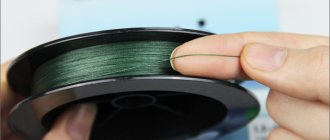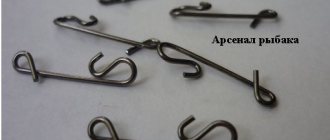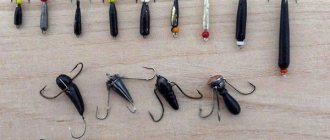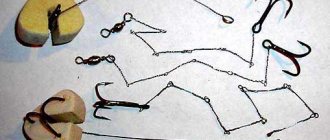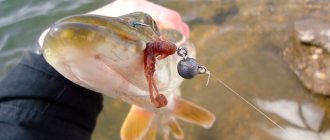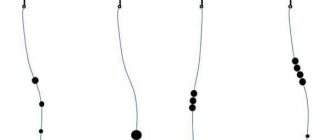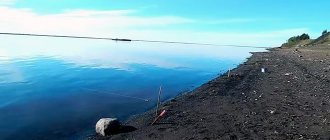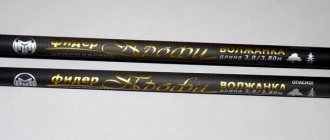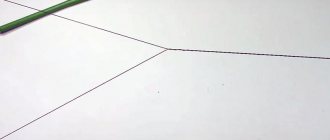Not a single spinning rod can do without a leash when catching a predator.
Some use fluorocarbon leashes, believing that the main thing is the invisibility of the equipment, others use metal ones, believing that its invisibility in the water is not so important and vote for durability. One thing remains the same: choosing a leash is the key to successful fishing! The article provides an overview of leash materials, their positive and negative properties, discusses the types of leashes, describes the installation and methods of making a leash at home, and useful videos will help you apply this element of equipment in practice.
Content
- 1. What is a fishing leash
- 2. What is a leash for?
- 3. Main characteristics of the leash
- 4. Where are leashes used?
- 5. What gear are the leashes attached to?
- 6. Material from which leashes are made
- 6.1 Fluorocarbon leaders
- 6.2 Leaders made of leader material
- 6.3 Steel leads
- 6.4 Titanium leads
- 6.5 Tungsten leaders
- 6.6 Guitar string leads
- 7.1 Neutral leashes
- 7.2 Sinking leads
- 7.3 Pop-up leashes
- 7.4 Invisible leashes
- 7.5 Hard leashes
- 7.6 Combined leashes
What is a leash for?
Purpose of the leash:
- Protection of the rod rig from unexpected snags and breaks, biting of the fishing line by a predator, wear and tear, as this factor is influenced by the number of casts, and friction of the fishing line against underwater obstacles in the form of stones, reefs, and algae.
- Inconspicuous in the water, since the color of the leader is used to match the color of the water, and it has a smaller diameter than the main line.
- The small diameter (thinness) allows the bait to be more mobile and behave naturally in the water, which attracts prey.
- The bait attached to the leash naturally plays in the water.
- Allows you to quickly change the hook.
Breaking load
When determining which of the feeder leashes is most suitable for fishing conditions, it is necessary to study the coefficient of its breaking load. The thread on it has a low density. So it will be invisible to prey. But the catch also depends on the thickness of the thread; you cannot catch large prey on such a thread.
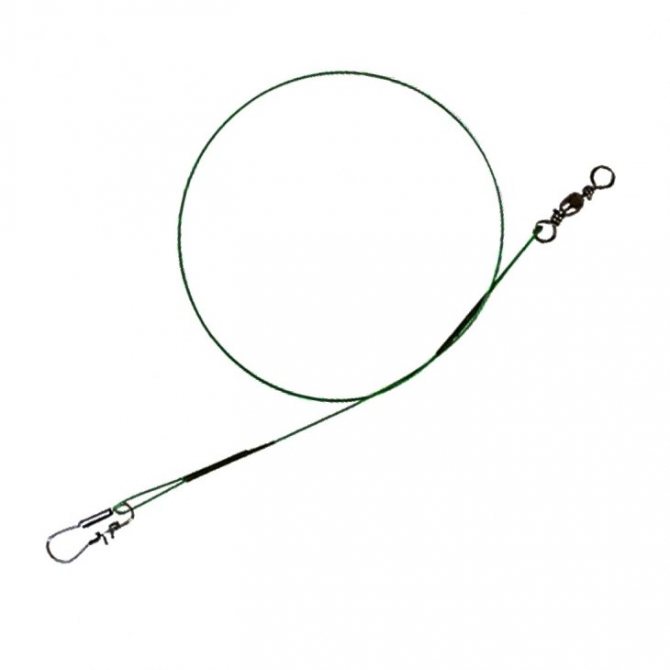
A large individual behaves with caution. When a fish detects a fishing line, you should not hope for any catch. Experienced fishermen recommend using a thin leash with bait on the hook. In this case, there is a chance to catch large prey. Remember, the leash should be thinner than the fishing line.
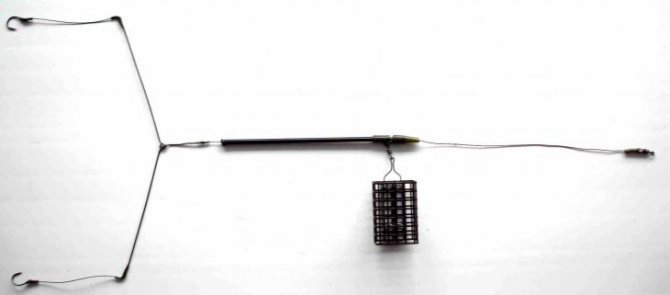
Fishermen are also advised to take into account the weight of the fish and its behavior. When using “braid” as the primary thread, the leash can be made from monofilament thread. However, the fishing line should have a diameter of about 0.12 mm with a tensile strength of 7 kg. The garter will be suitable with a breaking load of no more than 6 kg. The density of the leash can be 0.22 mm.
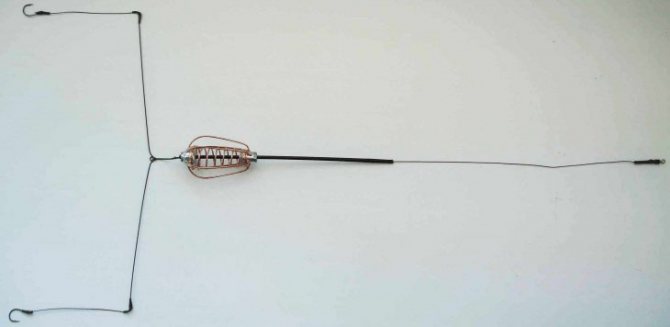
Main characteristics of the leash
Breaking load - this characteristic is reflected on the packaging; if the leash is made independently, then the load is determined through experiments.
The flexibility of the leader affects the performance of the bait, especially when small baits are used. For using large baits, this indicator is not important.
Wide range of colors - taken into account when choosing a reservoir.
Diameter – affects the breaking load of the leader. So, the higher this indicator, the worse the performance of the bait; the lower, the greater the probability of rupture. This characteristic is selected individually and depends on the size of future production and the characteristics of the reservoir.
It is important to remember that the selection of the diameter of the leader material must be combined with the hook.
Conventional combination of hook and leash diameter:
- No. 20 – 0.08 mm;
- No. 18 – 0.1 mm;
- No. 16 – 0.12 mm;
- No. 14 – 0.14 mm;
- No. 12 – 0.16 mm;
- No. 10 – 0.18 mm.
For example, for plug-in float and fly tackle, the difference between the diameter of the main line and the diameter of the leash should be 0.02 mm with a blind installation method. When using a fly rod, the main line is 0.2 mm, and the leader is 0.1 mm. When using reel rods, this difference can be greater.
The length of the leash plays a role:
- when casting bait over a long distance;
- on the size of future production;
- feeding fish (in case of carp fishing).
What should be the length of the leash for float tackle:
- lap dog - from 2.5 cm to 45.5 cm;
- match rod - from 2.5 cm to 45.5 cm;
- for catching small fish, from 8.5 to 10 cm is suitable.
- cord or fishing line (base);
- loops;
- crimp tubes;
- carabiner (attached to the main fishing line);
- swivel, used for free rotation of the bait that is attached to it.
Accessories for the leash:
How to attach a leash to a spinning rod
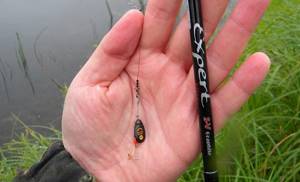
Fasteners and carabiners make it convenient and quick to connect the leash to the cord, and this method is justified when the fish is active and does not pay attention to the roughness and bulkiness of the equipment. But in most cases, fishing is carried out with a passive predator, where every nuance of installation can radically affect the success of the bite. In this case, the elements have to be connected using direct knitting, which makes thin and sensitive installations. We will continue our conversation about the three most popular connection types.
How to tie a leash to spinning braid
One of the quick and easy-to-learn ways to tie fishing leashes to the main cord of the tackle is the figure eight knot. When fishing for small-sized fish, this connection will provide the necessary reliability for heterogeneous materials that differ slightly in thickness, which is quite suitable for connecting the main lines with leashes. Even a one-time mastery of the knitting technique is firmly deferred by skill due to the simple technology. The usefulness of the knot is that it can be untied at any time without much effort or serious deformation of the material.
Loop-to-loop installation
Loop-to-loop installation is no less common than a figure-eight connection. This type of knitting has greater strength, maintaining a high percentage of the initial breaking loads of the cords being tied. The technique is simple and can also be applied to dissimilar materials with different thickness diameters. To knit a leash on a spinning rod, you need to form loops at the ends of the elements being connected and thread it through each other and tighten it with the leash until it is completely compressed, not forgetting to first moisten the knot being tightened.
What gear are leashes attached to?
- spinning;
- fly rod;
- match rod;
- balonese;
- float tackle;
- fly rod;
- girder;
- mugs.
Under what circumstances is it appropriate to use them? Firstly, when fishing in an area without algae or when catching cautious fish - for the sensitivity of the bite and the invisibility of the gear. Secondly, when catching medium-sized fish and when the bite is sluggish, it is more convenient to hook with thinner equipment. Thirdly, to avoid breaks in the main line in rocky and vegetative areas.
For fans of feeder fishing, it will be interesting to read an article from the magazine “Sports Fishing” entitled “Classic and modern English donka. Feeder leash assembly" https://sfish.ru/page/klassicheskaja-i-sovremennaja-anglijskaja-donka-fidernyj-povodok-v-sbore
For fans of sea fly fishing, the article “With fly fishing in the Black Sea” (magazine “Sports Fishing” https://sfish.ru/page/s-nahlystom-v-chernom-more) will be of interest
Feeder leash length
The length of the feeder leash mainly depends on the caution of the fish. If the fish bites well and hooks, then we have guessed the length of the leash, and there is no need to change anything.
If we get weak bites, and the fish are not detected, then it is worth lengthening the leash by 10-20 cm. If the situation has improved a little, you can further lengthen the leash, up to 120 cm.
If bites are not visible for a long time, but the fish is sitting on the hook, you should, on the contrary, reduce the length of the leash by 10 cm.
This was one of the selection options. Now let's look at other factors that influence the choice of leash.
If fishing occurs at shallow depths with clear water, it is better to use long leashes so that they move further away from the feeder, which can scare our potential catch.
It is worth shortening the leashes when feeder fishing in muddy water, at great depths, as well as when catching large fish that stay closer to the feeder with food.
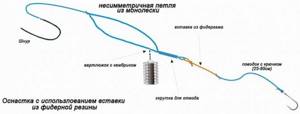
There is another theory for choosing the length of the leash, which depends on the strength of the current. The stronger the current, the longer the leash is needed. This can be explained by the fact that the food is washed out of the feeder and carried away a little further, and part of this food stops at approximately a distance of 50-120 cm from the feeder. A long leash sinks to the bottom longer and moves better in the current.
In still water the situation is different, and here it is worth using shorter leashes, from 15 to 50 cm long, so that the bait with the hook is closer to the feeder.
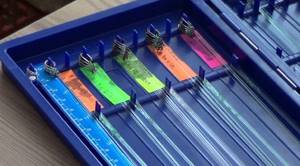
If you want to try fishing with a feeder in the water column, you should attach foam balls or ottomans to the hook, which will lift the bait from the bottom. The fishing horizon in the water column is regulated by the length of the leash; the longer the leash, the higher it is from the bottom.
Material from which leashes are made
The presented classification of leader material will help influence the quality of bites. The advantages and disadvantages of various types of this part of the equipment will be discussed further.
Rating of leashes by price (from expensive to cheap leashes):
- Titanium leashes
- Tungsten
- Steel (strings)
- Braided steel
- Fluorocarbon
- Nylon
6.1 Fluorocarbon leaders
The combination of fluorine and carbon allows one to obtain a substance such as fluorocarbon. The technical side of fluorocarbon production is identical to the production of nylon monofilament lines.
Leaders made of this material are recommended for use in cases where camouflage of the fishing line in the water plays an important role, for example, when catching cautious fish. Fluorocarbon is valued for its transparency in water, however, not 100%.
The downside to using fluorocarbon wire is that the larger the diameter, the more noticeable it is in the water. Thus, a leash diameter greater than 0.35 mm already loses its “invisible” properties.
Positive properties:
- invisibility in water due to the low level of light refraction in water;
- wear resistance, does not stretch, which allows for sharp and powerful hooking of fish;
- speed of immersion in water;
- the ability to withstand changes in temperature conditions, which does not affect the loss of its original characteristics;
- does not absorb water, which allows it to retain its shape for a long time.
What kind of gear is a fluorocarbon leash attached to:
- spinning rod (lead length from 1 to 3 m);
- float rod (lead length from 15 to 30 cm);
- feeder (used less often, since the equipment lies on the bottom when casting, but with some equipment options, a leash can be attached and then the equipment will hang in the water column above the bottom).
The diameter of the leader depending on the weight of the fish:
- from 1.3 kg – not less than 0.14 mm;
- from 1.8 kg – 0.16 mm;
- from 4 kg – 0.2 mm;
- from 6 kg - 0.31 mm.
An interesting video about this type of leash from the “Hunter and Fisherman” channel
6.2 Leaders made of leader material
Leashes made from leash material are homemade. This material is purchased in a store and consists of many thin steel rods, which are woven together into one thread and covered with a special film. Then leashes are made from it.
Area of application : fishing with spinners and wobblers in areas overgrown with vegetation. For example, Russian fishermen use this material to make leashes for pike fishing. Under such fishing conditions, fluorocarbon leashes should not be used due to their high cost and the high probability of being eaten by a predator.
Fishing methods:
- jig;
- mugs.
Advantages of this material:
- softness, which has a positive effect on the performance of light-weight baits;
- low memory, which eliminates severe deformation of the leash over time.
Flaws:
- wears out, which manifests itself in the form of detachment of threads of material from the common braid, in which case the leash needs to be replaced;
- with strong knots it becomes deformed.
Instructions for making a leash from leash material are described in detail here https://makchen.ru/nadezhnye-povodki-dlya-rybalki-svoimi-rukami-iz-povodkovogo-materiala-pontoon-21.html
Interesting to see! A little trick for squeezing a leash at home from the author of the video 100500 obzorov
6.3 Steel leads
Advantages of a steel leash:
- rigidity (impossibility of snacking on fish);
- does not get confused;
- passes through algae perfectly and cuts them with a sharp jerk;
- attractive price.
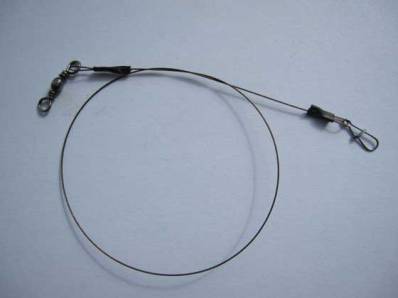
Flaws:
- cumbersome equipment;
- poor camouflage in water;
- nodes are the weakest point;
- plastic.
Application area:
- jig fishing;
- twitching;
- fishing with wobblers.
Where to buy:
- fishing shops;
- make it yourself from pieces of field wire (other names: field wire, military field cable) or guitar string (the largest in diameter).
One example of making a leash from bentgrass, proposed by the author-fisherman Corleone
Advantages of a field cable leash:
- ease;
- small diameter;
- cheap;
- excellent for fishing with small wobblers (does not affect their behavior in water).
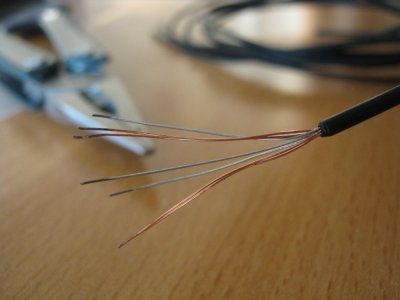
Advice: when using wobblers, to prevent their loss, it is better to attach such a leash to the factory ring of the bait.
Flaws:
- poor flexibility and not long (no more than 15 cm), if you do more, the leash will begin to curl;
- When fishing for large fish, the loop of such a leash becomes very tight.
- does not have an even shape, you need to manually align it;
- production time costs.
6.4 Titanium leads
Titanium leashes are one of the most modern elements of spinning equipment on the fishing market and differ from the rest in their high cost.
Externally very similar to leashes made of leash material.
Advantages:
- durability;
- zero memory;
- resistance to snacking;
- It is made of lightweight material, which allows the wobbler to show all its playing properties in the water. For example, metal leashes can make any surface wobbler suspended or sinking due to the heavy weight of the equipment;
- do not require special care, as they are not subject to oxidation.
Flaws:
- rude;
- noticeable in the water;
- subject to rupture, for example, when caught on snags;
- the high cost of the leash and accessories for it.
Twenty-minute video from V. Kolomiets, offering one of the methods for making a leash from titanium material
6.5 Tungsten leaders
The leash is made by twisting threads of tungsten material.
Tungsten is the most refractory metal. In the USA, France and England, such material is usually called “tungsten” or in Russian heavy stone.
Advantages:
- inexpensive;
- soft, which has a good effect on the game of the bait;
- reliable.
Tip: to extend the life of the leash and straighten it, just hold the bend over the fire (for example, using a lighter). However, it is worth remembering that when using this method of resuscitation, the leash at the warming site becomes brittle.
Flaws:
- short-lived (when used more than three times, it tends to twist strongly, which makes it completely unusable for further use);
- quickly wears out in the place where the fastener is attached, which may be a consequence of losing the wobbler.
6.6 Guitar string leads
To make a leash at home, you need to twist two guitar strings (1 and 2) together.
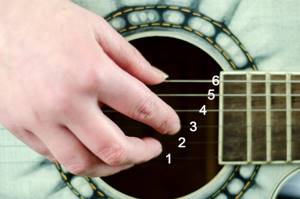
Advantage:
- no need to use additional fittings, since loops are made at the ends of the future leash;
- strength;
- rigidity.
Flaws:
- poor flexibility, which ultimately has a bad effect on the performance of the bait;
- inconvenience when attaching or removing the bait (you need to unwind the loops);
- are susceptible to corrosion, even in freshwater, so use in sea fishing is not advisable.
Types of leashes
7.1 Neutral leashes
Neutral - made of soft woven materials.
Peculiarity:
- do not float up;
- don't drown.
Why? Because the density of the leash is equal to the density of water. Mainly used in algal areas of the reservoir.
For example, these leashes:
- super nova kryston;
- magician suffix.
Advice:
- such leashes can become sinking due to rubbing with soft lead;
- with a neutral leash, it is better to use bottom baits or baits of neutral buoyancy.
7.2 Sinking leads
Such leashes lie on the bottom. Used in places where the bottom is clean.
The disadvantage is that the diameter is thicker than other leashes.
Manufacturers of sinking leashes:
- delude fox;
- Merlin Kriston;
- nuflex sufix.
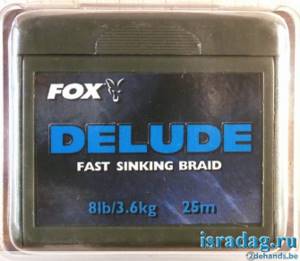
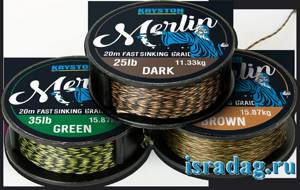
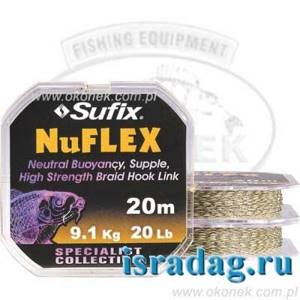
7.3 Pop-up leashes
They are used in overgrown areas and with a thin muddy layer of the bottom. For example, such leashes are used when fishing for carp. The leashes are made in such a way that it is possible to “hang” the leash above the bottom surface in a suspended state. An example of such leashes are leashes made of polyethylene.
7.4 Invisible leashes
Used in clear water and on a clean bottom.
7.5 Hard leashes
Such leashes are used for fishing with jerk baits and jig baits. When using a 12-15 cm bait, a leash with a diameter of 0.3-0.5 mm and a length 1.5 times longer than the bait itself is used. This indicator is the most optimal. For example, when using a 0.45 mm leader and a 2.5 cm bait, the jerk will sink.
Advantages:
- affordable price;
- the ability to choose the optimal leash for the bait used;
- an alternative to invisible leashes when the fish gets tired of them.
Flaws:
- increased ability to deform;
- fragility, as they are highly susceptible to rust.
7.6 Combined leashes
Such leashes are made from leashes of various types. For example, an invisible leash can be paired with a sinking one; this combination is advantageous in that one part of the leash is at the bottom, and the second invisible one floats up. Where to apply this combination? For example, when hunting cautious fish, or as a surprise-new item for fish. An option with a combination of materials is possible - braided and fluorocarbon.
Advantages:
- new for fish;
- designed for various baits;
- maximum camouflage.
Using a feeder for a leash
Feedergum is a short piece of feeder rubber that is placed between the equipment and the leash. The task of the feeder is to absorb the jerks of medium and large fish, which is very important when using thin leashes.
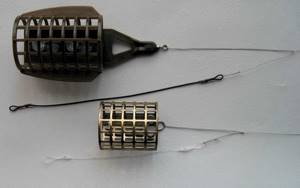
For more information about feeder rubber and installation options, see our previous article here.
Author of the article: Vitaly Leonidovich Ivanov, 2021.
How and where to store leashes
Possible storage locations:
- A photo album with “pockets”, where information about the size, diameter, etc. is written on the pocket with a marker.
- A heat-insulating tube, onto which leashes are attached along the entire length from the outside, by fastening the loop of the leash with a pin, and the hook on the other side is stuck into the tube. Minus: the leads are located outside and are not protected by anything; the tube may become deformed during transportation. Plus: cheap storage method.
- Leash holders (made of plastic or wood).
- You can buy a set of cheap paralon reels.
Storage rules:
- It is better to organize leashes according to characteristics.
- Store in such a way as not to deform them.
- Store in a dry place.
Rules of care:
- Store in paper soaked in machine oil to avoid rust.
- Lubricate with Vaseline or machine oil.
Option for making a leash at home from OSD2006
useful links
https://ulov.guru/snasti/spinning/flyurokarbonovyy-povodok-ego-osobennosti-i-sposoby-primeneniya.html - article about fluorocarbon leash, its features and application;
https://handf.mirtesen.ru/blog/43475273987/Povodki-dlya-spinninga - article about leashes for spinning rods;
https://www.my-spinning.com/povodki/povodok-iz-polevogo-kabelya.html - article about leashes made from field cable;
https://fishingwiki.ru/Leash - information about leashes from Wikipedia;
https://plotka.ru/lovlya-na-otvodnoy-povodok/ — an interesting article about the features of fishing with a retractable leash.
